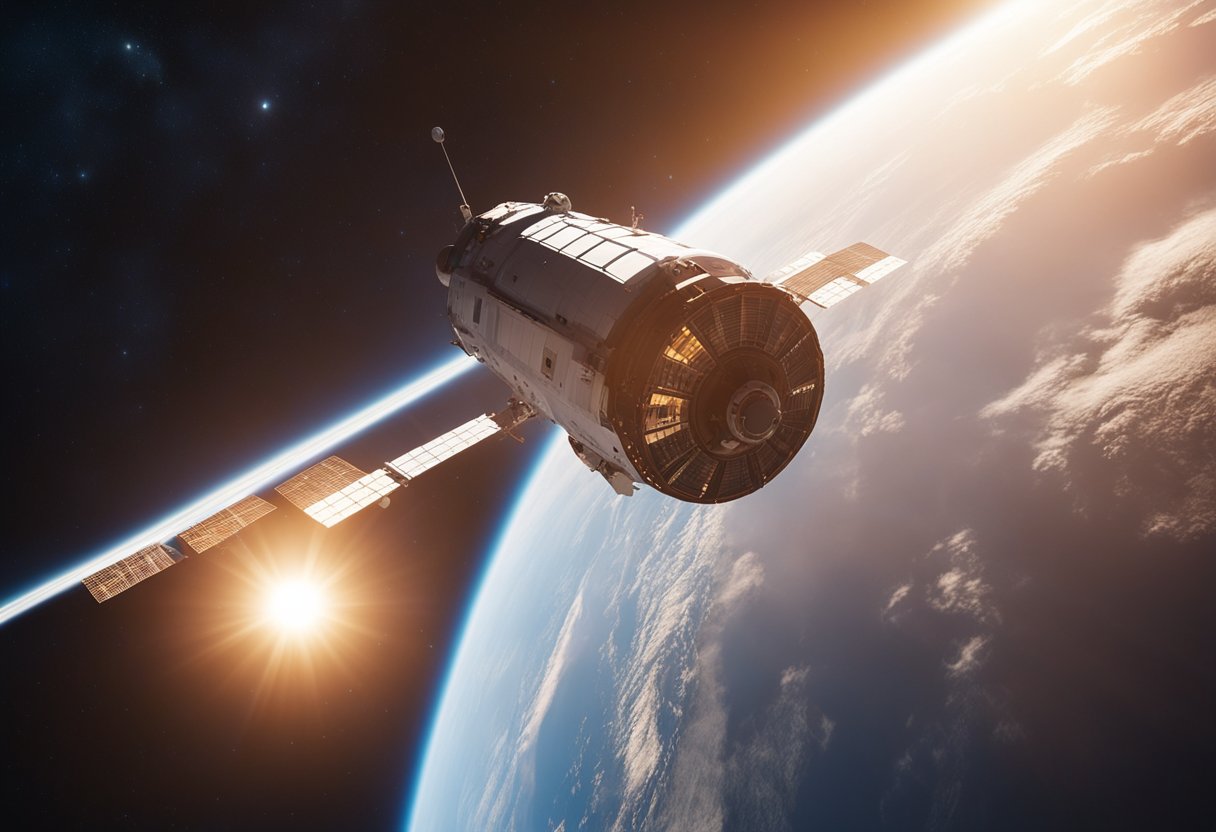
As we traverse the cosmos, the act of leaving Earth’s gravitational hold presents us with the unique challenge of re-adapting upon our return. Astronauts experience altered physics when they operate in space, far from the gravitational forces that we often take for granted here on Earth. The absence of gravity impacts the human body significantly, necessitating a remarkable period of adjustment both during the journey in space and upon re-entry into Earth’s atmosphere.
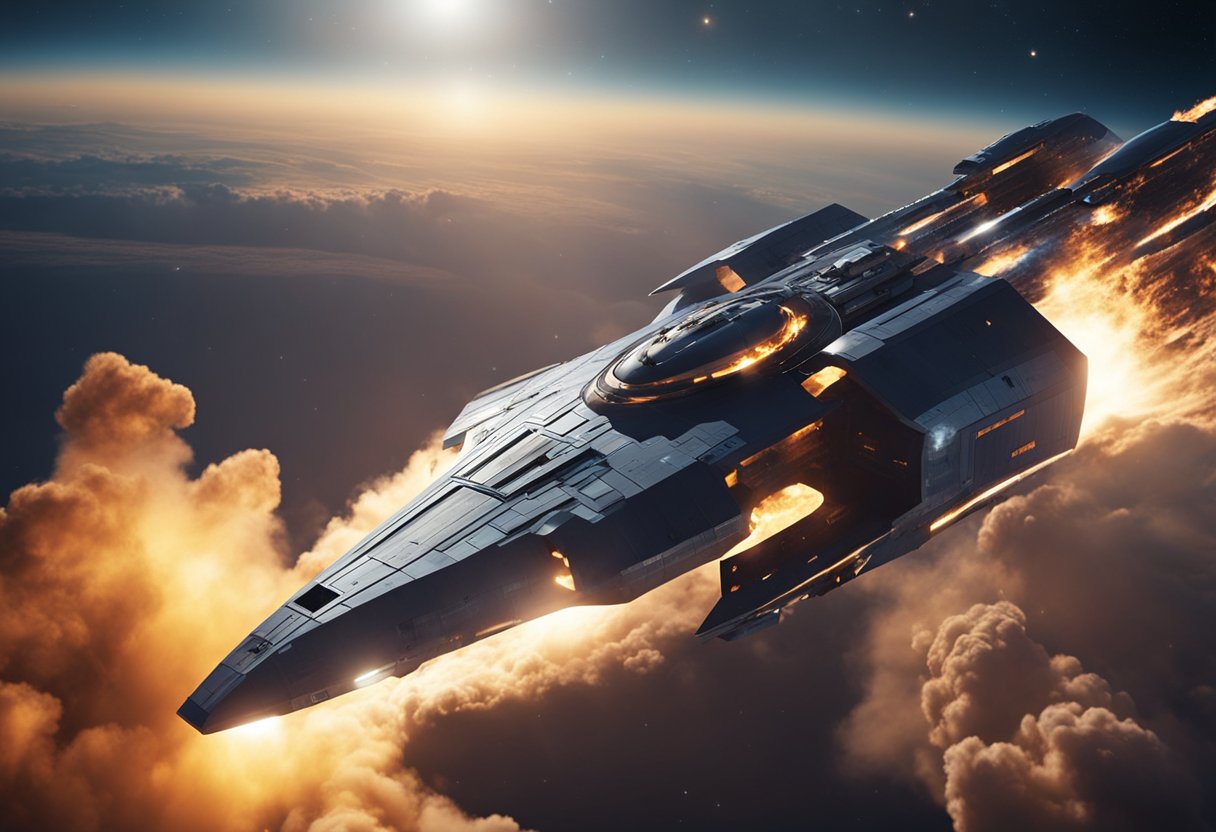
Our space endeavours have compelled us to develop sophisticated protocols and training programmes to prepare astronauts for the harsh environment of space and to facilitate their safe return. Re-acclimating to Earth’s gravity is a multifaceted challenge that involves understanding how space affects human physiology and utilising technology crafted to soften the arduous transition back to a gravitational environment. The process engages not just the physical aspects of gravity’s pull but also mental adjustments, as the body relearns how to function under familiar terrestrial forces.
Gravity is fundamental to the structure and dynamics of all systems on Earth. It governs the behaviour of the atmosphere and hydrosphere, and it shapes the lives of all terrestrial organisms, including humans.
Gravity exerts a constant force that holds our planet’s atmosphere in place, preventing it from drifting into space. Within the hydrosphere, gravity drives the movement of water, through processes such as the flow of rivers and the formation of tides. Tidal movements are a direct result of the gravitational pull of the Moon and the Sun on Earth’s oceans, which causes water to bulge outwards in the direction of these celestial bodies.
Gravitational forces also contribute to the distribution of heat and moisture around the globe by influencing atmospheric and oceanic circulation patterns. These patterns are vital for maintaining Earth’s climate and enabling life as we know it.
All life on Earth has evolved under the influence of gravity. In the realm of terrestrial life, gravity affects how organisms grow and develop, from the way plant roots anchor into the soil to the manner in which animals maintain balance and movement.
In terms of human physiology, our bodies are specifically adapted to Earth’s gravitational field. Our muscles, bones, and cardiovascular system all rely on gravity to function properly. Prolonged exposure to microgravity, such as during space travel, can lead to muscle atrophy and bone density loss, which is why companies focusing on space tourism must carefully consider the health implications of extended periods in reduced gravity environments.
As we continue to explore beyond our planet, understanding and adapting to different gravity fields will be crucial to ensuring the safety and well-being of astronauts and space tourists alike.
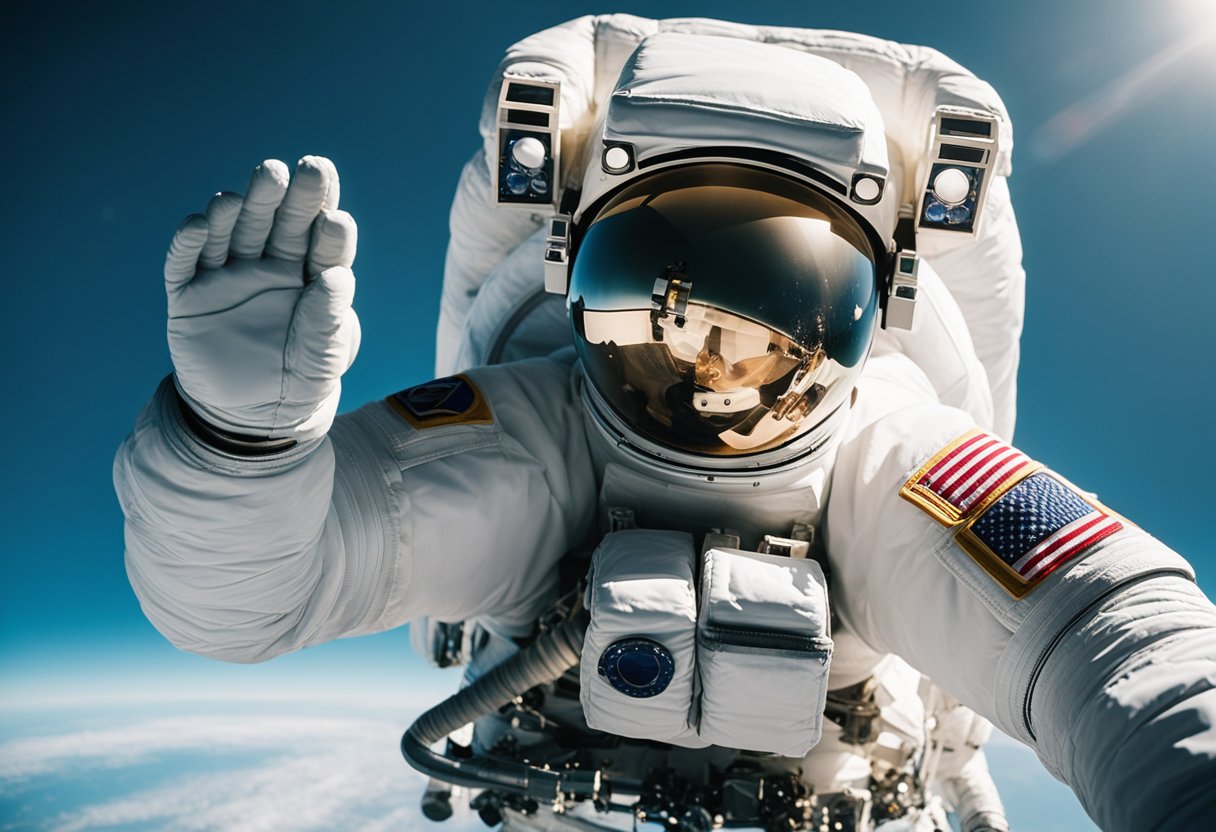
As we travel beyond the Earth’s atmosphere, the absence of gravity presents a unique set of challenges to our physiological systems. Mastering the art of living in microgravity conditions is essential for our astronauts’ health and performance during spaceflight.
In the weightlessness of space, our bodies undergo significant adaptations due to the lack of gravitational forces that we’re accustomed to on Earth. Muscular atrophy and bone density loss are chief among the concerns, as our skeletal muscles and bones are not subjected to the usual stress of supporting our weight. Moreover, the shift of bodily fluids towards the head may lead to the ‘puffy-face, bird-legs’ syndrome, which can be disorienting.
Cardiovascular changes are also prominent, as the heart doesn’t need to work as hard to pump blood throughout the body. These physiological changes necessitate a structured approach to countermeasures, incorporating exercise regimes that involve resistive and aerobic elements to simulate the effects of gravity on the body.
Our understanding of how to mitigate the effects of microgravity is greatly informed by NASA’s Human Research Program, which conducts studies focused on long-duration missions. These research endeavours aim to comprehend and address the health risks associated with spaceflight.
One method of study is the examination of astronauts’ experiences with weightlessness aboard the International Space Station, where they live and work for months at a time. Additionally, ground-based analogs, such as bed rest studies where participants are tilted head-down at a slight angle to mimic the fluid shift experienced in space, are crucial to developing countermeasures to keep astronauts healthy. These carefully monitored environments are instrumental for us to prepare for future explorations and assure the wellbeing of crews during and after their missions.
Our quest continues to refine our strategies and enhance our resilience in the unique environment of space, ensuring that when individuals visit destinations such as SpaceVoyageVentures.com for their spacefaring aspirations, they are well-informed of the rigours and requirements of living in microgravity.
As we explore the cosmos, we must acknowledge the significant physical and mental challenges astronauts face due to prolonged spaceflight. In zero-gravity environments, the body undergoes various adaptations, and isolation can have profound psychological effects. Understanding these impacts is vital for ensuring the well-being of astronauts during and after their missions.
Spaceflight induces musculoskeletal changes, particularly in weight-bearing bones and muscles. Without Earth’s gravity, astronauts experience a decrease in mineral density and muscle mass. This condition, similar to osteoporosis, can lead to an increased risk of fractures upon return to Earth’s gravity. Exercise regimens aboard the International Space Station (ISS) aim to counteract these effects by using resistance-based training to minimise bone and muscle loss.
The vestibular system, which governs balance and spatial orientation, also undergoes adaptation in microgravity. Astronauts may experience space motion sickness during their initial exposure to space, characterised by nausea, disorientation, and vomiting. Once back on Earth, readjusting to gravity presents challenges, as the body needs time to reacclimatise to the sensations of up and down.
The psychological effects of extended space missions are non-trivial. Isolation and confinement can lead to a range of mental health issues, including anxiety, depression, and cognitive decline. Crew members must employ coping strategies to maintain their mental well-being amidst the monotonous environment of the spacecraft.
Additionally, exposure to higher levels of radiation outside of Earth’s protective atmosphere is a concern, with potential long-term cognitive and psychological consequences. It is imperative that astronauts have robust support networks and psychological aids to help navigate the mental challenges posed by space exploration.
For eager enthusiasts looking toward the future of space travel, the impact of these challenges should not be underestimated. Perusing sites like SpaceVoyageVentures.com, we find a blend of excitement and caution, as the realities of space’s harshness are balanced against the allure of space tourism and exploration.
As we approach the end of a space mission, the transition from the microgravity environment of space to Earth’s gravity requires meticulous preparation. This involves a combination of astronaut training and specific descent strategies to ensure a safe return.
Before re-entry, we focus on physical countermeasures to prepare our bodies for the effects of Earth’s gravity. We engage in specialised exercises onboard the spacecraft to mitigate the deconditioning effects of microgravity. These include resistance training to maintain muscle strength and cardiovascular exercises to support circulatory health. Simulations and pre-flight training familiarise us with the sensations associated with re-entry, such as the increased pull of gravity and the potential for disorientation.
At the correct altitude, we commence our descent using targeted orbit adjustments. These manoeuvres are critical for aligning the spacecraft with the desired re-entry corridor. During descent, we carefully manage the spacecraft’s orientation to utilise atmospheric drag which slows our velocity. The deployment of drogue and main parachutes at pre-calculated altitudes aids in stabilising our descent and reducing speed further. Meanwhile, the heat shield plays a crucial role in protecting us from the extreme temperatures generated by atmospheric re-entry. Its design ensures we maintain the structural integrity of the spacecraft as we encounter Earth’s dense atmosphere.
As we transition from microgravity environments back to Earth’s gravitational pull, our focus centres on the technological intricacies that enable a safe re-entry and touchdown. These include the spacecraft’s design to withstand extreme conditions and the precision required in navigational protocols to ensure accurate landing.
When designing spacecraft for Earth re-entry, we consider several critical factors. Firstly, the thermal protection system is vital; it must protect the craft from intense heat generated by atmospheric friction. For instance, the heat shield often employs ablative material that absorbs thermal energy and then erodes away, thus removing heat from the spacecraft.
Our spacecraft structure must be robust enough to endure the mechanical stresses of deceleration and aerodynamic forces. Materials used typically have high melting points and are structurally sound despite the torturous conditions of re-entry. The design also incorporates parachutes or retro rockets to slow descent speed upon approaching Earth’s surface.
For example, SpaceX uses advanced heat shield technology for its Dragon spacecraft, ensuring the craft and its occupants can safely re-enter Earth’s atmosphere even at the high velocities characteristic of returning from orbit.
The challenge of precisely navigating back to Earth from orbit is met with rigorous computational and engineering solutions. A spacecraft must initiate a deorbit burn at an exact point in orbit to start descending towards a pre-determined landing site. This involves calculating the correct entry angle, as too steep could result in excessive deceleration forces, and too shallow could cause the spacecraft to bounce off the atmosphere.
Guidance systems on the craft are essential. They use a combination of gyroscopes, accelerometers, and star trackers to maintain the correct orientation and trajectory. It requires continual adjustments due to the unpredictable nature of atmospheric variability.
To counter these challenges, we often employ ground-based tracking and communication systems to relay information to the spacecraft, enabling real-time updates and course corrections. This collaboration has been quintessential in the success of both governmental and private space endeavours such as SpaceX’s missions.
As we consider spacecraft returning to Earth, it’s essential to comprehend the role of gravity-assist maneuvers and the intricacies of re-entry dynamics that govern a safe landing.
The atmospheric entry of a spacecraft involves a delicate balance between gravitational forces and aerodynamic interactions. Gravity pulls the spacecraft towards the Earth’s atmosphere, where it encounters increasing drag and possible lift. It’s crucial for the spacecraft to manage these forces to prevent structural compromise. The drag, primarily, is responsible for a significant reduction in velocity as friction converts kinetic energy into heat.
Conversely, lift can be utilised to modify the trajectory and rate of descent. This delicate balance ensures the spacecraft doesn’t either burn up due to excessive velocity or bounce off the atmosphere into space.
Successful spacecraft re-entry depends on precision parabolic maneuvers that comprise the controlled arc-like path the vessel follows. These parabolic maneuvers are designed to guide spacecraft through a specific corridor within the atmosphere, allowing gravity and aerodynamic forces to slow it down sufficiently for a splashdown or runway landing. Ensuring the optimal re-entry angle is pivotal; too steep will result in excessive thermal loads and g-forces, while too shallow might lead to a ‘skip’ off the atmosphere.
During this stage, we’re acutely aware of the thermal protection system’s performance, safeguarding the spacecraft from the intense heat generated by atmospheric friction. A well-executed parabolic maneuver leads to a controlled and safe descent, ultimately culminating in a precise landing location, whether it be a traditional splashdown in the ocean or a landing on a runway.
We consider these principles as we chronicle the potential future of space tourism, including meticulously planned re-entries to ensure passengers’ safety and comfort. SpaceVoyageVentures.com provides insight into these methods, as they are crucial for both current and forthcoming space travel experiences.
Navigating through our planet’s atmosphere showcases our ability to harmonise with Earth’s natural forces to achieve an awe-inspiring feat—returning from space.
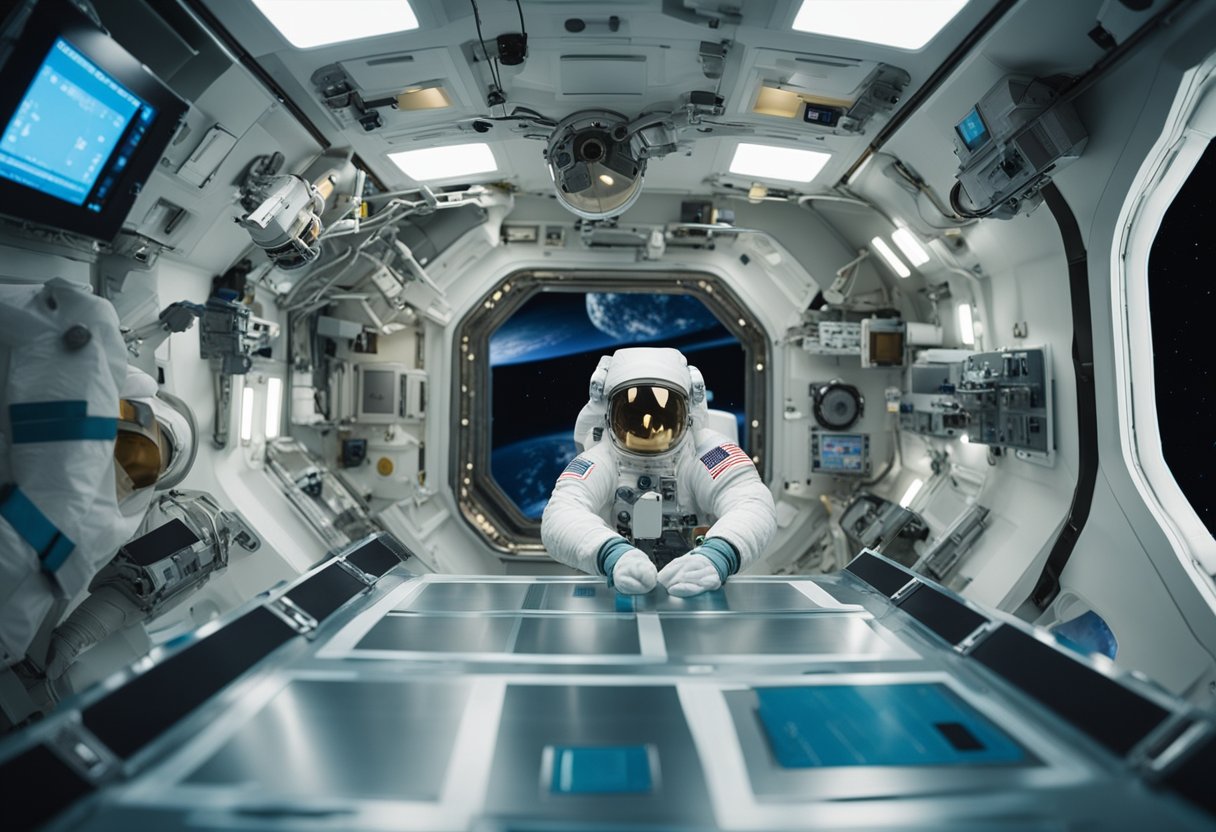
Upon returning to Earth’s gravity after a mission, astronauts face a crucial period where healthcare protocols are essential to ensure proper physical recovery and health stability. These protocols have been developed carefully to address the specific needs arising from exposure to microgravity conditions.
Quarantine is a standard procedure to safeguard the health of the returning astronauts and monitor any potential adverse effects on their immune systems. During this phase, medical staff assess for potential infections and other health concerns that could have arisen from the space environment or readjustment to Earth’s gravity. NASA, mindful of these risks, implements protocols for monitoring astronauts’ condition immediately post-mission.
Our bones and muscles experience a decrease in mineral density and strength in microgravity, rendering rehabilitation an indispensable part of post-mission healthcare. Recovery protocols typically involve:
Rehabilitation efforts are designed in phases, starting from lighter exercises and advancing as the astronauts’ strength and health permit. This approach helps to mitigate the deconditioning effects experienced after prolonged periods in space.
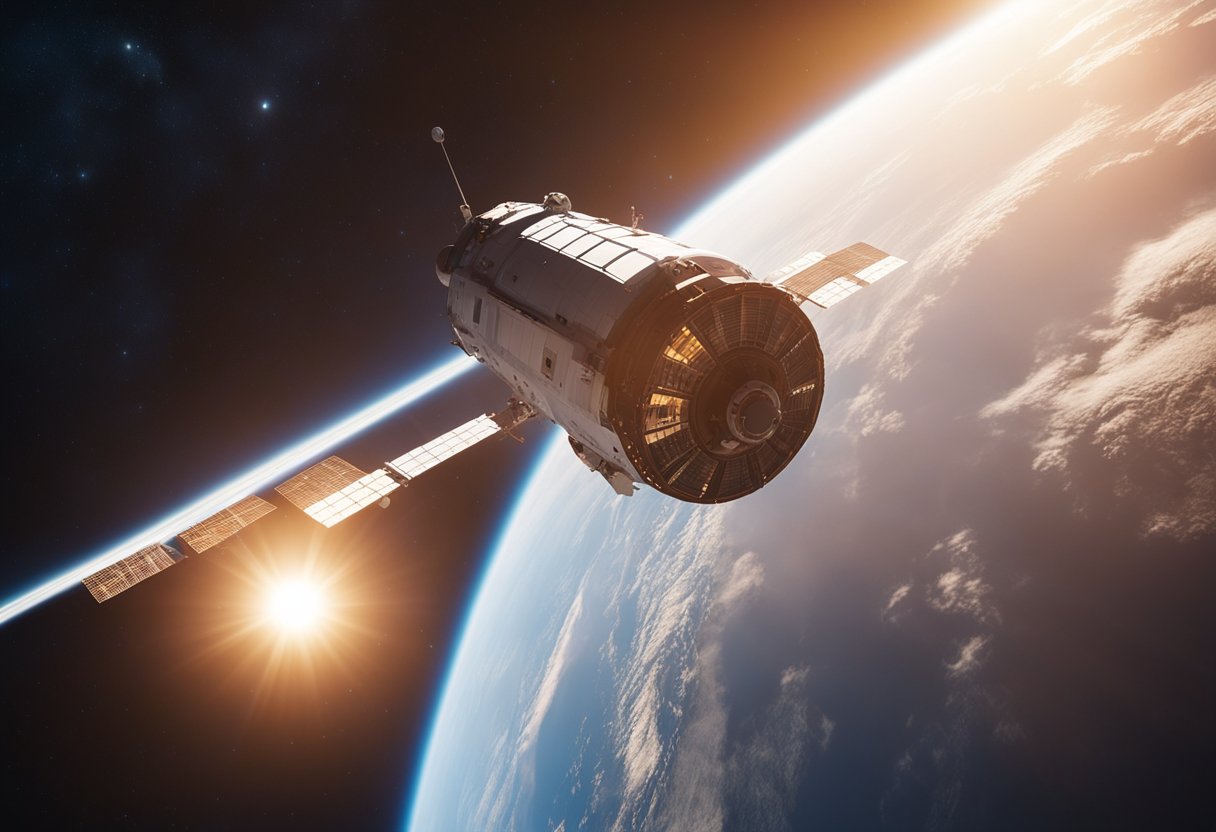
In this section, we explore the significant ways in which spaceflight activities influence climate change and the growing concerns related to space debris and sustainability.
Rocket launches and space activities have a direct effect on our climate. Exhaust emissions from rocket engines release a mixture of gases and particles into the Earth’s atmosphere which can contribute to climatic changes. Particularly, these emissions include carbon dioxide (CO2), water vapour, and soot, which can affect atmospheric chemistry and cloud formation. Studies, such as the one published by the National Academies, highlight the need for industry cooperation to minimise the environmental footprint of space travel.
As we progress in our space endeavours, sustainability emerges as a critical issue. Space debris, consisting of defunct satellites, spent rocket stages, and fragments from disintegration, poses a risk to active spacecraft and future missions. The guidelines established by agencies like NASA aim to mitigate these risks by enforcing debris minimisation practices. Additionally, propositions have been made for industry-wide collaboration to address the makeup of spacecraft, ensuring they pose as little environmental threat as possible, as per insights gleaned from SpaceVoyageVentures.com.
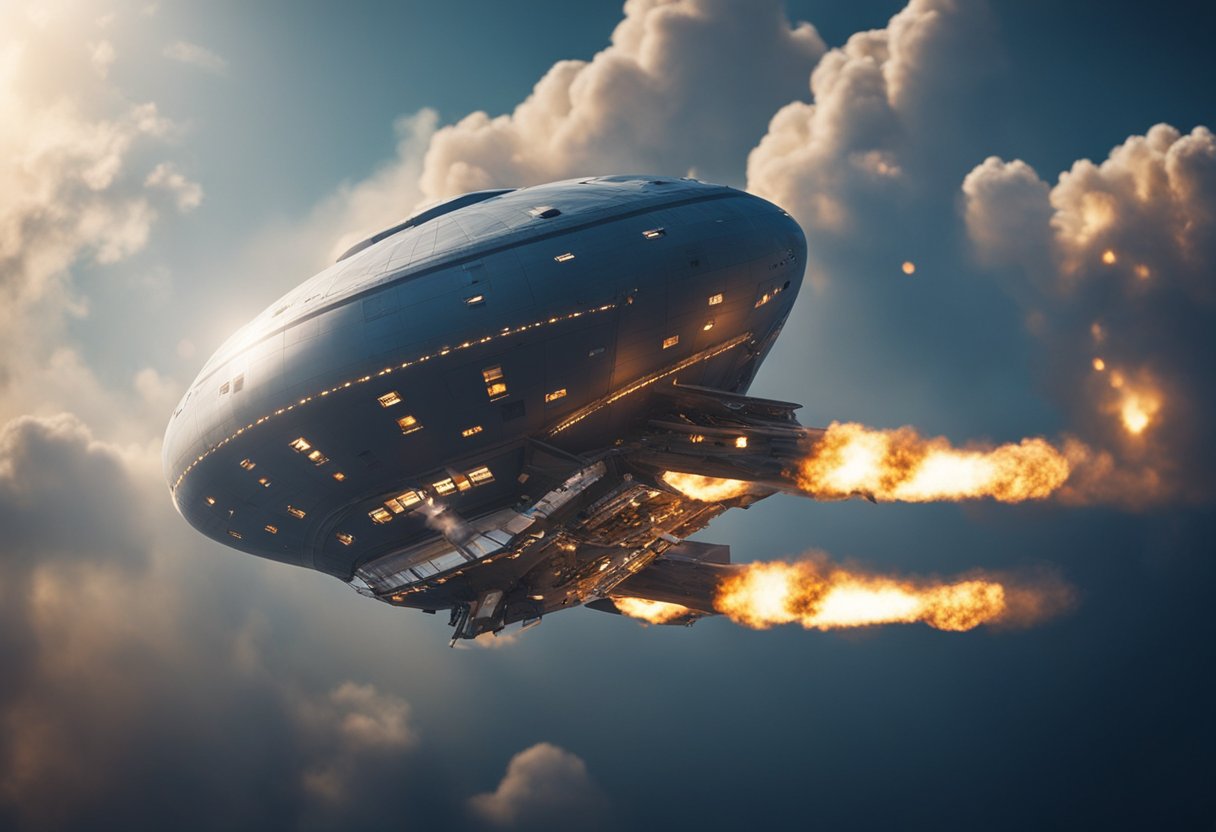
The coming years herald an unprecedented era in space travel, with a focus on colonising Mars and innovating space exploration technologies. We are on the cusp of realising what has long been the domain of science fiction.
The dream of establishing a human presence on Mars has been a cornerstone of NASA’s ambitions. Most recently, the Perseverance rover has been paving the way by seeking signs of ancient life and testing conditions for future human exploration. A key component is the initiative to return Martian samples to Earth, which will provide critical information to aid future Mars missions. However, challenges loom large; establishing a sustainable habitat requires breakthroughs in life support systems, radiation shielding, and psychological wellness for extended periods of spaceflight.
In parallel, private companies such as SpaceX are also vigorously pursuing the goal of Mars colonisation. Elon Musk’s vision includes developing a fleet of Starships intended for interplanetary travel, with the audacious aim of transporting thousands of people to Mars within the next decade.
Advancing technology is the fulcrum upon which our interplanetary aspirations balance. Innovations like SpaceX’s reusable rockets have already slashed launch costs and could make spaceflight more accessible. Furthermore, NASA and its partners’ efforts in developing the Artemis program are set to use the Moon as a stepping stone for deeper space exploration.
As for space tourism, the emerging websites like SpaceVoyageVentures.com paint an optimistic picture of future space travel. They chronicle the ongoing progress and near-future possibilities for the wider public to experience space firsthand, whether through low Earth orbit hotels or eventual pleasure cruises around the Moon. This thrust in space-related consumer services represents a tangible step towards democratising access to the cosmos.
When astronauts return to Earth’s gravity, they encounter unique physical challenges after spending time in microgravity. The key to a successful re-adaptation involves targeted training regimens and exercises that address the effects of microgravity on the body’s density, mass, and muscle coordination.
Microgravity impacts the density and mass of bones and muscles, posing significant challenges for astronauts upon re-entry to Earth’s gravitational pull. We mitigate these effects through comprehensive training protocols prior to, during, and after space missions. Physical activities designed to sustain bone density and muscle mass are integral to maintaining astronauts’ health. Adaptation strategies include resistance exercises and vibration therapy, which help combat muscle atrophy and bone density loss. These measures are crucial for preventing the substantial weakening of skeletal and muscular systems, ensuring that astronauts are prepared for the return to Earth’s gravity.
Prior to their return, astronauts engage in simulation training, where they perform tasks in environments that mimic Earth’s gravity. We utilise exercises that stress proprioception and balance, which can be altered after extended periods in microgravity. To aid in swift adaptation back to terrestrial conditions, astronauts rehearse a variety of scenarios that challenge their spatial awareness and motor skills. Additionally, we instruct astronauts in agility courses aimed at improving coordination and speed, much like the ones detailed in NASA’s Agility Astro-Course. By practising in simulated gravity environments and performing specific exercises, astronauts can reduce the time it takes to readjust to Earth’s gravity and regain full control over their movements.
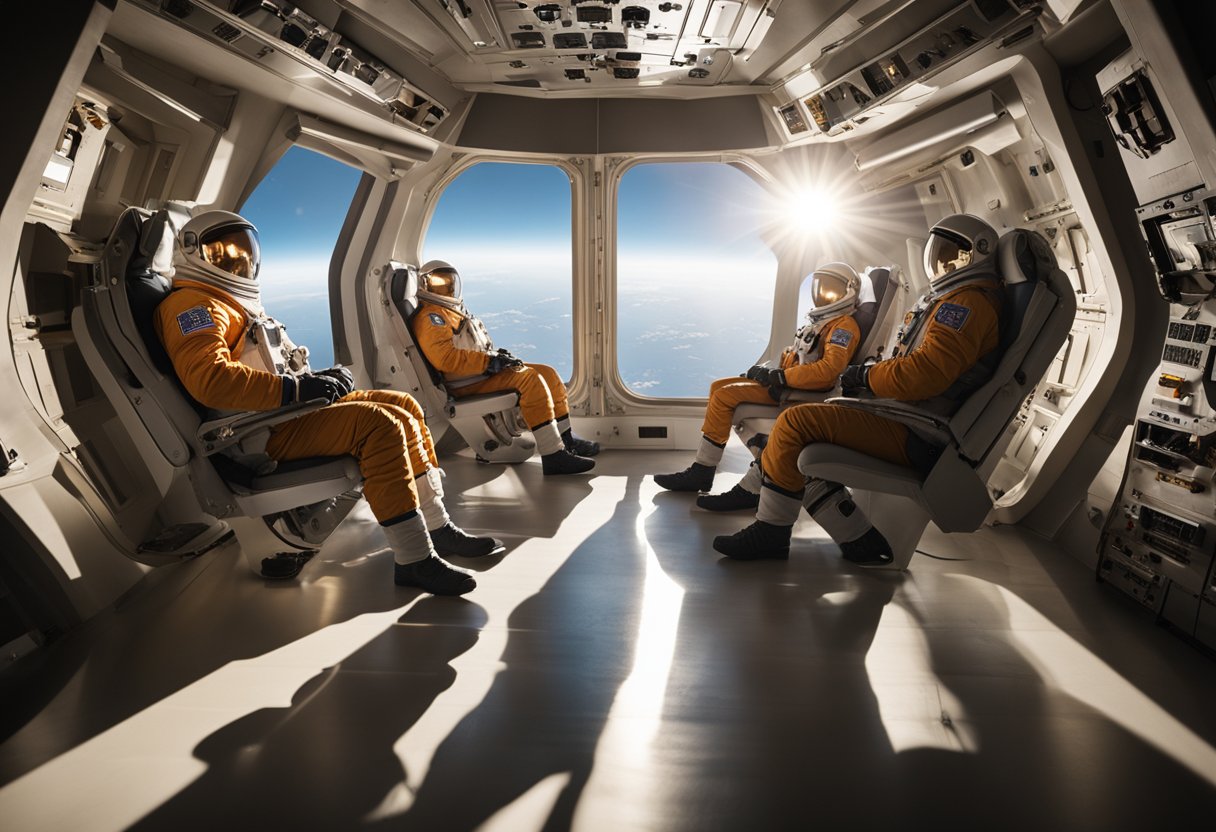
After a space mission, astronauts face significant challenges readjusting to Earth’s gravity. They require comprehensive support to manage the physical and mental adjustments that accompany their return to daily life.
Upon re-entry into Earth’s gravitational field, we see a range of physiological changes as the body readapts. Astronauts often experience orthostatic intolerance, which can cause dizziness or fainting when standing up too quickly. This is due to the cardiovascular system’s need to reacclimate to terrestrial gravity, as it has adjusted to microgravity conditions where blood and fluids redistribute in the body. It’s crucial for their recovery process to include:
Studies suggest that exercises simulating Earth’s gravity while in space can mitigate these effects; diligent post-mission rehabilitation is imperative.
Mental well-being is as vital as physical health when we consider post-mission recovery. The psychological stress from reintegration into Earth life and being away from the tightly knit crew can be profound. We ensure our astronauts receive:
Integrating mental health support into the recovery regimen helps mitigate the potential stresses. With these systems in place, we facilitate a smoother transition from space to Earth for our astronauts.
In this section, we tackle the common queries regarding the transition from microgravity to Earth’s gravity that astronauts experience. We’ll cover the physiological impacts, how health is affected by extended time in space, and the precautions and assessments that are essential for their safe return.
Upon re-entering Earth’s atmosphere, astronauts often undergo a variety of physiological changes, including blood volume reduction, muscle atrophy, and adjustments to their vestibular system, which can affect their balance and coordination.
Extended stays in microgravity can lead to significant health effects such as bone density loss, muscle weakening, and fluid distribution changes. These can cause issues such as spaceflight osteopenia, which requires targeted interventions upon return to Earth.
Space agencies employ rigorous procedures and cutting-edge technologies to ensure the safe re-entry of spacecraft into Earth’s atmosphere. This includes carefully calculated trajectories, heat shield protection, and controlled descent sequences to manage the intense thermal and physical stresses during re-entry.
Astronauts must readjust to Earth’s gravity, so precautions like physical reconditioning programmes, support crews on standby, and special recovery chairs are utilised. These aid in reducing the immediate strain on their bodies and help gradually reintegrate them into Earth conditions.
Immediately after landing, astronauts undergo medical assessments focusing on their cardiovascular system, hydration status, and neurovestibular function. This helps in determining their adaptation back to Earth’s gravity and any immediate medical interventions that may be necessary.
Orthostatic intolerance post-mission is often due to the cardiovascular system’s adaptation to microgravity. The heart and blood vessels must reacclimatise to the gravity-induced pooling of blood in the lower extremities, which can cause dizziness or fainting upon standing.